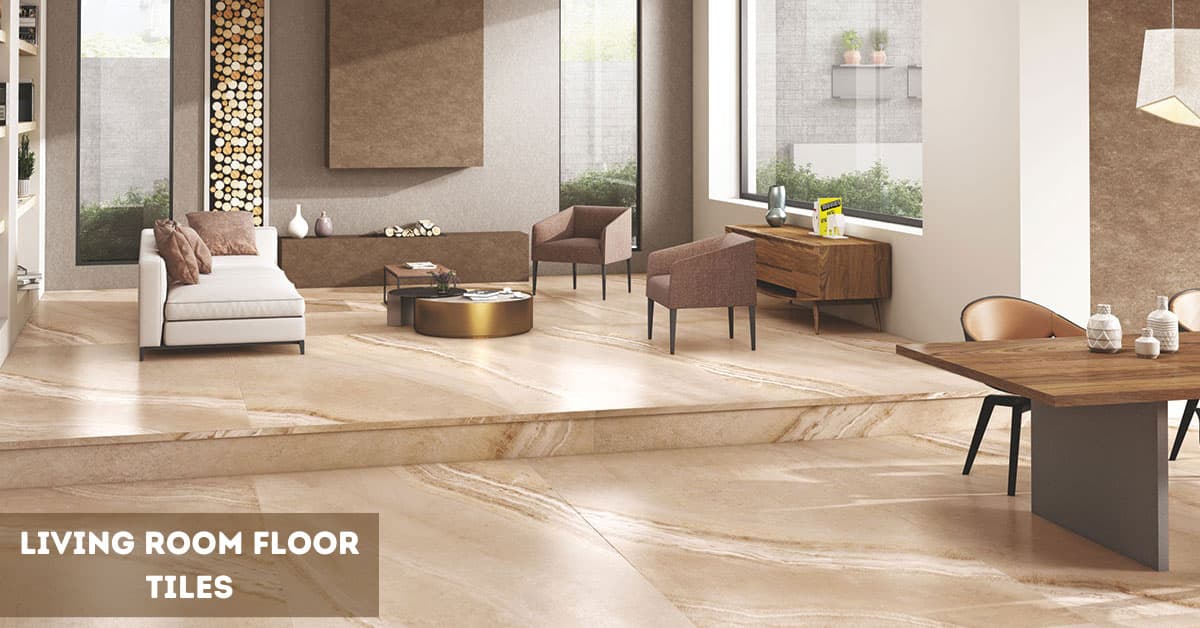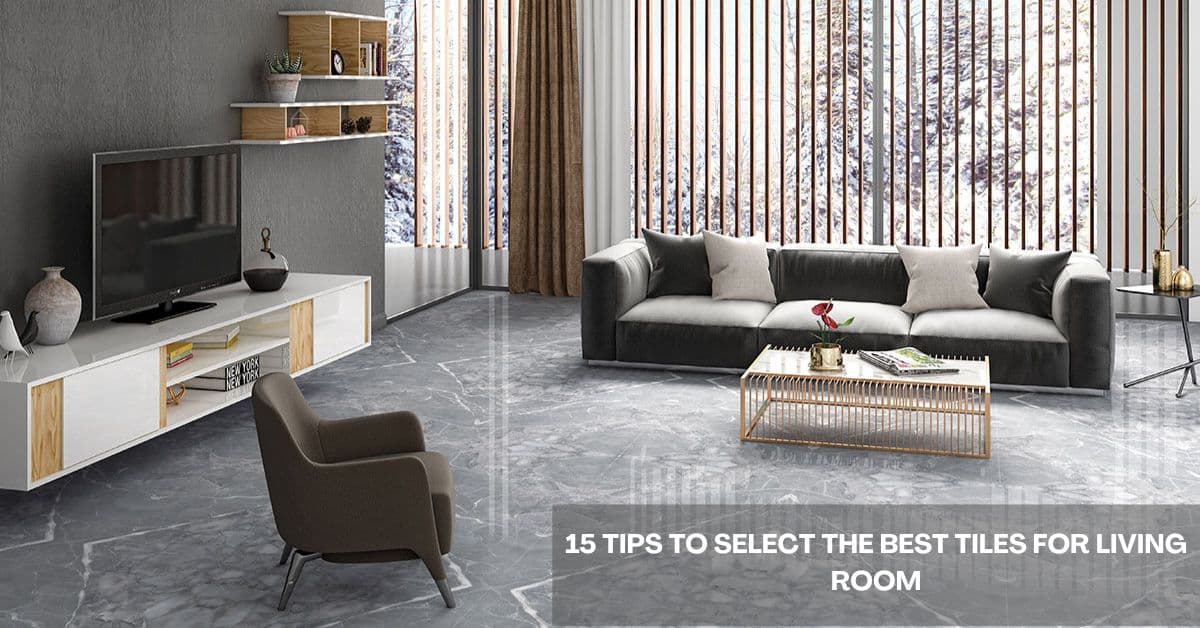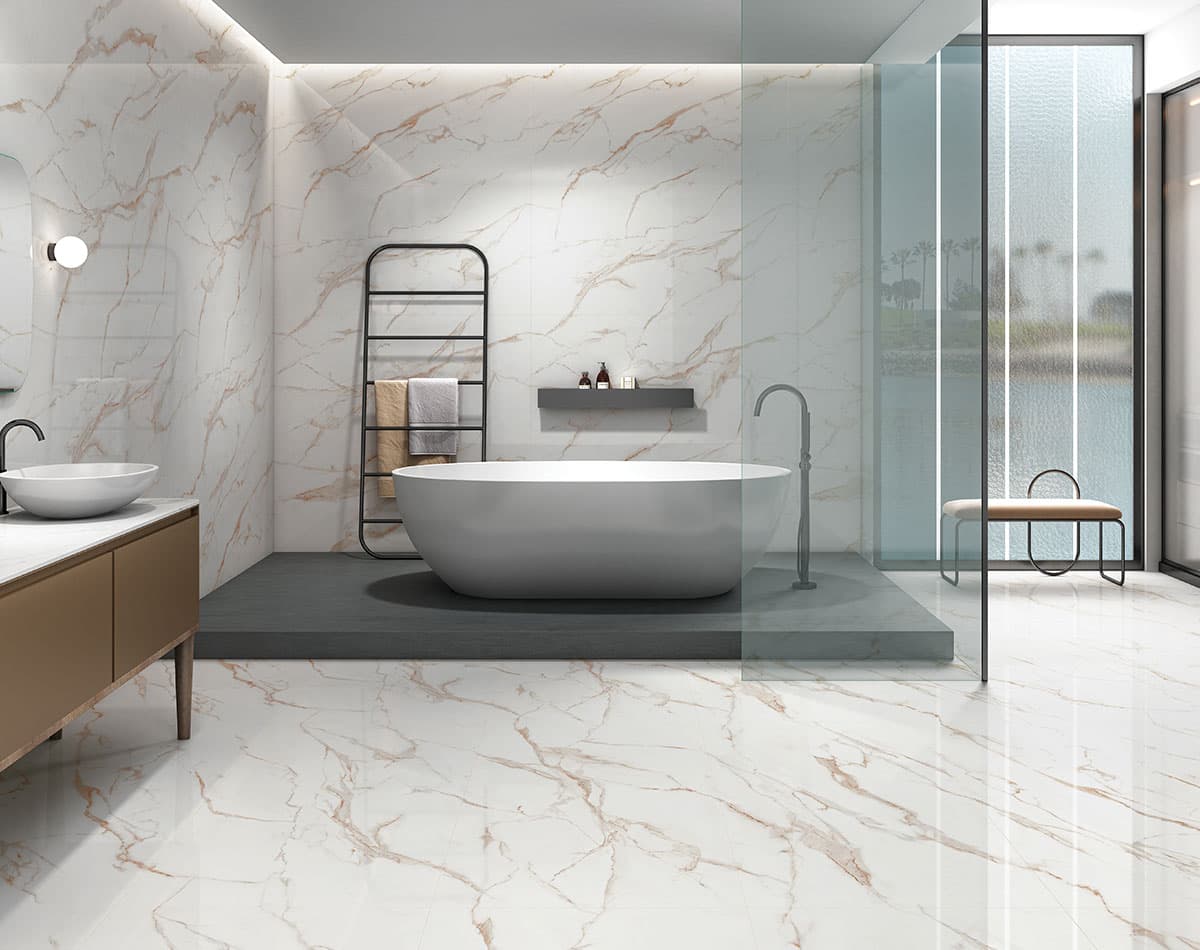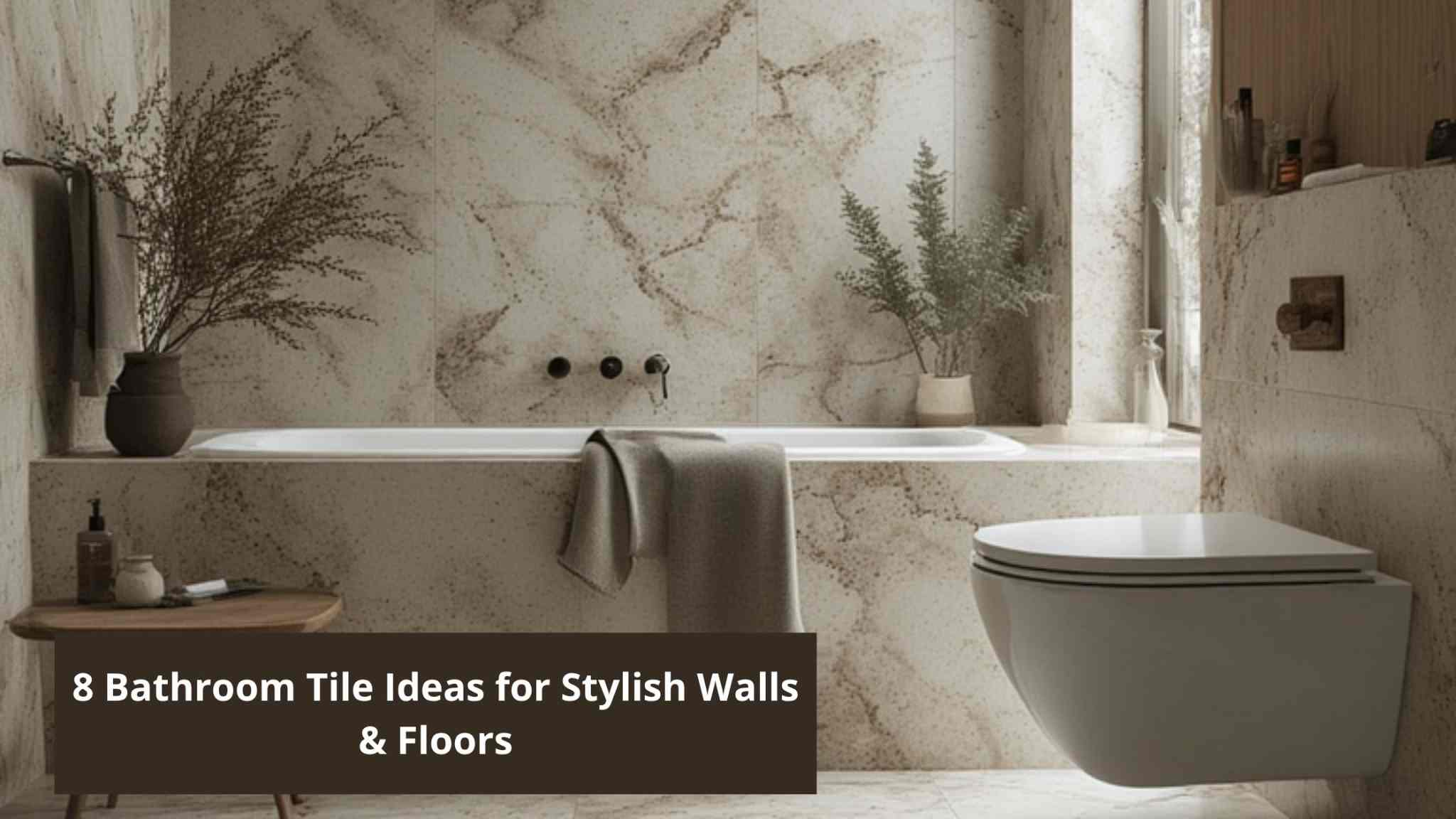Top 5 Waterproof Flooring Options for Your Living Room

Choosing the right flooring for your living room is essential to ensure durability and longevity, especially in high-traffic areas. The flooring in living rooms endures substantial wear and tear due to various reasons and inferior materials may deteriorate more quickly under such conditions. If you want a surface that stays in good shape and looks classy, waterproof flooring is an appealing solution. From tiles to modern composite materials, you have countless ways to keep your living room stylish without stressing over water damage.
Below are five detailed options, each with their pros and design suggestions. Once you install floors that can stand up to spills and humidity, it makes daily life simpler and your overall decor more consistent.
1. Porcelain Tiles
Porcelain tiles rank at the top for moisture management. Thanks to their dense structure, they absorb very little water. This detail makes them perfect if you want a worry-free, inviting space. Many of us at home have found porcelain tiles ideal, especially in open-plan living areas that combine dining zones or balconies. The benefit is that they merge function with a wide selection of colours and designs.
- Pros
Porcelain resists spills and stains. It is easy to clean. It also offers a vast range of textures. You can go for matte or polished finishes, depending on your design theme.
- Design Tip
Use a tile in a large format for a contemporary, seamless look. Large tiles reduce grout lines, making your living area look more open. If you like the effect of wood or concrete, many porcelain lines mimic those styles perfectly.
2. Ceramic Tiles
Ceramic tiles share similarities with porcelain but are typically less dense and often more budget-friendly. They are still a solid choice for living rooms where mild dampness or the occasional spill might occur. Because they are simpler to produce, you will find them in bright patterns and classic motifs that can transform your living room into a vibrant social space.
- Pros
They suit a wide variety of aesthetics. They also come at various price points. They are fairly sturdy for a high-traffic room, and mild soapy water is enough to clean them.
- Design Tip
Mix ceramic tiles with accent inserts or small decorative pieces. Doing so creates a focal point in your room, which is helpful if your overall decor leans neutral. This approach also adds a personal flair to an otherwise simple pattern.
3. Luxury Vinyl Planks
Luxury vinyl planks replicate the warmth of wood without the downsides of real timber. They often come in interlocking systems, making installation more straightforward. Many modern vinyl planks are considered water-resistant flooring due to their protective wear layers, so they handle moisture better than standard laminate.
- Pros
They bring a wood-like style that is softer underfoot than tile. They usually have decent insulation properties, so your living room stays cosy. Scratches do not show up easily on higher-quality planks.
- Design Tip
Try laying the planks diagonally if your living room is on the smaller side. Angled installation adds visual interest and can make the space feel more expansive.
4. Engineered Hardwood with Sealants
Engineered hardwood features a real wood veneer attached to composite boards. With the right sealants, it can tolerate humidity better than solid hardwood. If you love the feel of genuine wood but worry about moisture, this is a practical compromise.
- Pros
It delivers the classic charm of natural grains. The top layer looks authentic, and you get fewer warping issues compared to standard wooden planks. Simple refinishing can renew the top surface if it wears down over time.
- Design Tip
Pick mid-toned finishes that hide dust or pet hair effectively. Dark stains can show smudges, while very light stains might highlight every mark. A balanced shade in a wooden plank is easy to live with daily.
5. Natural Stone with Sealants
Some people adore the old-world charm of natural stone in a living room. Options like slate, marble, or travertine can look majestic, yet stone is prone to stains. By applying a proper sealant, you increase its resilience against moisture. It becomes a decent choice for households wanting a touch of luxury without constant upkeep.
- Pros
It has unique veins and colour variations that offer exclusive styles and designs. Many stones also stay cool in hot weather, which is a plus in warmer regions.
- Design Tip
Pair stone floors with plush furniture and warm-toned accessories. If you choose a neutral stone colour, brighten it up with deep-hued drapes or cushions.
Best Design Tips for Waterproof Flooring in the Living Room
A living room should feel both inviting and practical. Here are some final design considerations:
When dealing with tile solutions, remember that Simpolo Tiles & Bathware offers features such as the Digital Showroom and Virtual Space Creator. This tool lets you preview how our living room floor tiles, like the Alchimia, Basaltino, Sparko, Glyphstone, etc., might appear in your own space. You can also scan each tile’s Smart Code to view 3D or 360° angles and customise size and design preferences before deciding.
Waterproof flooring may sound purely functional, but you can spruce it up with area rugs, layered lighting, and matching furniture. If you prefer a minimalistic vibe, large-format tile or polished surfaces can visually expand your living room. If you like a cosier mood, add more textured surfaces, which help define each seating or entertainment zone.
Conclusion
Selecting the right living room flooring can be overwhelming. You want it to look great, feel comfy, and stand up to everyday life. By focusing on waterproof flooring solutions, you guard against surprise spills and keep your space easy to maintain. You can choose porcelain or ceramic tile for a timeless feel or try modern vinyl planks if you enjoy a soft, wood-like appearance. Whichever path you take, the end goal is a living room you love spending time in, free from worries about moisture or constant repairs.
FAQs
1. Can I install waterproof floors in an open-plan living room and kitchen?
Yes. Most water-resistant floors handle spills in both zones. A single material in the entire space creates a uniform look. Ensure the material you choose can stand up to kitchen spills and heavy foot traffic. Proper sealing or choosing the right tile helps maintain a neat, cohesive area.
2. Will waterproof or water-resistant flooring be cold to walk on?
Some materials, like porcelain or ceramic tile, can feel cooler underfoot. Placing rugs in key areas makes it more comfortable. Certain floors, like vinyl or cork, stay a bit warmer. In colder climates, you can also look into underfloor heating systems for extra warmth.
3. Are tile floors more slippery compared to vinyl or laminate?
It depends on the finish. Matte or textured tiles usually have a better grip, reducing slips. Polished tiles can be slick if they get wet. Simpolo Tiles and Bathware offers many surface options, including slip-resistant coatings. If you are concerned, choose a tile from a collection like Sparko or Venitto with an anti-skid finish.







